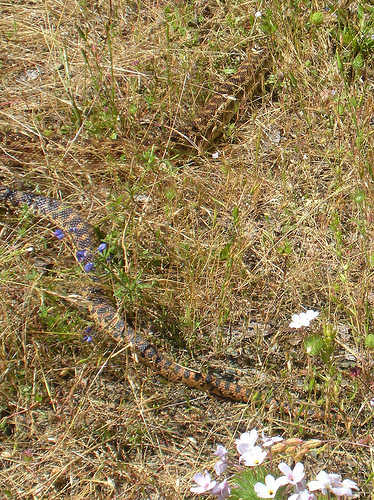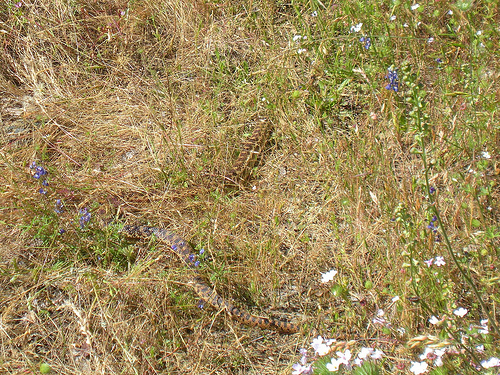Last week’s Focus on Reptiles and Amphibians challenge was to start a focus study of reptiles and amphibians in our local area whether that was actually going out and finding a subject to investigate or to use this week’s challenge as a preparation for a future outing. We were fortunate enough to have two different snakes cross our trail (literally) last week and for my nature journal I used the printable reptile notebook page from the Reptile and Amphibian Grid Study entry earlier this month.
I pulled out our field guides and did some research into our two snakes and recorded the information and a couple of quick sketches for my journal. Snakes are not my favorite nature study subject but it is helpful to know a little bit about these two common snakes that live in our area.
I started a “reptile and amphibian” section in my nature notebook and I plan on adding to it as subjects arise. I have a short list of things to research and record as I have time over the next few weeks.
You can read more about how we organize our nature notebook pages in a binder in this entry:
How to Organize Your Nature Notebook Pages.
Have you seen any reptiles this month?




